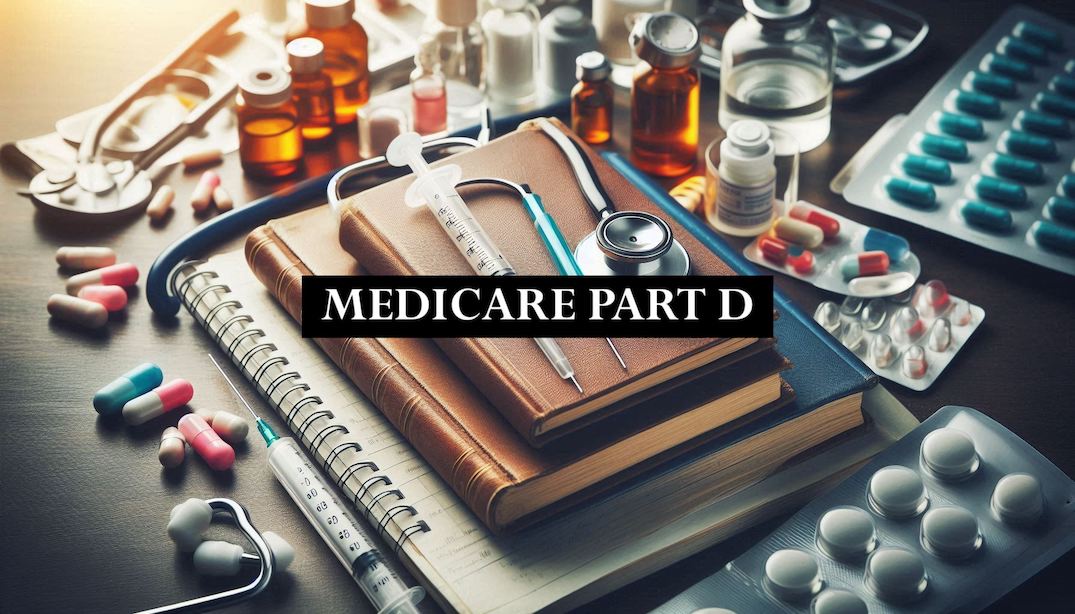
Medicare Part D is the prescription drug coverage component of Medicare, designed to help Medicare beneficiaries pay for prescription medications. It is available to anyone who has Medicare Part A and/or Part B.
Costs of Medicare Part D
Medicare Part D costs can vary depending on the plan you choose and your specific prescription needs. Here’s a breakdown of the typical costs associated with Part D in 2024:
- Premiums: The average monthly premium for Part D plans is about $32.74 in 2024. However, the actual cost may vary based on the specific plan and your location.
- Deductibles: Before your coverage kicks in, you may need to pay a deductible, which can be up to $545 in 2024.
- Copayments and Coinsurance: After meeting the deductible, you’ll generally pay a copayment or coinsurance for each prescription. The amount depends on whether the drug is generic, a preferred brand-name, a non-preferred brand-name, or a specialty drug. Here’s a general idea:
- Generic Drugs: Copayments typically range from $1 to $10 per prescription, with coinsurance around 25% of the cost.
- Preferred Brand-Name Drugs: Copayments usually range from $25 to $50, or coinsurance may be around 25%.
- Non-Preferred Brand-Name Drugs: These might have copayments between $50 and $100 or more, with coinsurance often 25% or higher.
- Specialty Drugs: These high-cost drugs often come with a coinsurance of 25% to 33% of the cost.
Understanding the “Donut Hole”
The “donut hole,” or Coverage Gap, is a temporary limit on what your Part D plan will cover for prescription drugs. Here’s how it works:
- Initial Coverage: Once you meet your deductible, your plan starts to cover your prescriptions. You pay a copayment or coinsurance until your total drug costs (what you and your plan pay combined) reach $5,030 in 2024.
- Donut Hole (Coverage Gap): After your drug costs hit $5,030, you enter the donut hole. In this phase, you pay 25% of the cost for both brand-name and generic drugs until your out-of-pocket expenses total $8,000.
- Catastrophic Coverage: When your out-of-pocket costs exceed $8,000 in 2024, you exit the donut hole and enter catastrophic coverage. At this point, you pay the greater of 5% of the drug costs or a small copayment for the rest of the year.
Coverage of Medicare Part D
Part D plans vary in terms of the drugs they cover. However, they must cover at least two drugs in most categories and all “substantially all” drugs in six essential classes: antidepressants, antipsychotics, anticonvulsants, anticancer, immunosuppressants, and HIV/AIDS drugs.
Interaction with Other Insurance
- Medigap: Medicare Supplement Insurance (Medigap) policies sold after January 1, 2006, cannot include prescription drug coverage. If you have an older policy with drug coverage, you can choose to keep it or join a Part D plan.
- Medicare Advantage: Some Medicare Advantage Plans (Part C) include prescription drug coverage. If you join one of these plans, you generally receive all Medicare-covered healthcare, including drugs, through that plan.
- Employer or Union Health Coverage: If you have prescription drug coverage through an employer or union, joining a Medicare Part D plan could affect this coverage. You should get a coverage decision from your employer or union before making changes.
How to Purchase Medicare Part D
You can buy Part D coverage through private insurance companies approved by Medicare. Enrollment can be done during:
- The Initial Enrollment Period when you first become eligible for Medicare.
- The Annual Election Period from October 15 to December 7 each year.
- Special Enrollment Periods if you qualify due to specific circumstances, such as losing other credible prescription drug coverage.
Finding Part D Providers
To compare Part D providers, visit the Medicare Plan Finder on Medicare’s official website. There, you can review plans based on costs, coverage, and customer satisfaction ratings.
Requirements to Purchase Medicare Part D
To enroll in a Part D plan, you must:
- Be entitled to Medicare Part A and/or enrolled in Medicare Part B.
- Live in the service area of the Medicare prescription drug plan you want to join.
For specific plan details, costs, and enrollment instructions, it’s advisable to visit the official Medicare website or consult with a Medicare representative. This will help ensure you get the coverage that best meets your needs and stays up to date with any policy or coverage changes.
-Nguyễn Bách Khoa-
________
Sources and Further Research: These resources offer in-depth information and are useful for anyone looking to understand Medicare Part D in detail.
- Medicare.gov – Medicare Part D Overview: Medicare.gov
This page provides a comprehensive overview of what Medicare Part D covers and how it works. - Kaiser Family Foundation – Medicare Part D: A First Look at Medicare Prescription Drug Plans in 2024: KFF.org
An analysis of Medicare Part D plans, including premiums, deductibles, and the coverage gap. - Social Security Administration – Medicare Part D Costs: SSA.gov
Details about the costs associated with Medicare Part D and what beneficiaries can expect to pay. - Centers for Medicare & Medicaid Services – Medicare & You 2024 Handbook: CMS.gov
A useful guide for Medicare beneficiaries with information on all parts of Medicare, including Part D.
